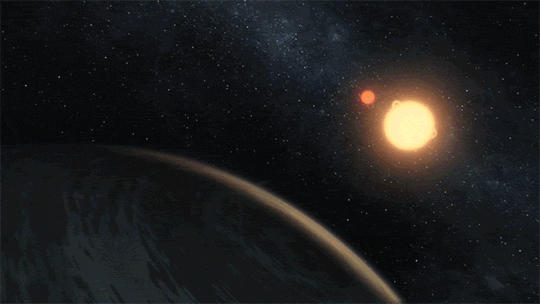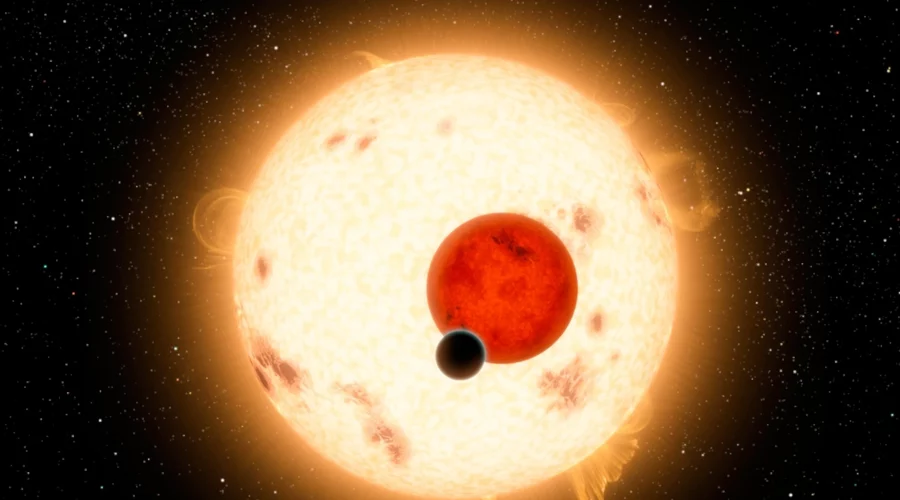A Saturn-sized alien planet that orbits around two stars at once has been detected by astronomers using a ground-based telescope in France.
Dr Alexandre Santerne, from the University of Marseille, a collaborator on the research explains: “Kepler-16b was first discovered 10 years ago by NASA’s Kepler satellite using the transit method. This system was the most unexpected discovery made by Kepler. We chose to turn our telescope and recover Kepler-16 to demonstrate the validity of our radial-velocity methods.”
Now astronomers using the Observatoire de Haute-Provence in southeast France have made ground-based observations of Kepler-16b, which orbits around two stars. They used a 193 cm telescope and today published their results, as part of the BEBOP survey, in the Monthly Notices of the Royal Astronomical Society.
Professor Amaury Triaud, from the University of Birmingham, who led the team, explains: “Using this standard explanation it is difficult to understand how circumbinary planets can exist. That’s because the presence of two stars interferes with the protoplanetary disc, and this prevents dust from agglomerating into planets, a process called accretion.

“The planet may have formed far from the two stars, where their influence is weaker, and then moved inwards in a process called disc-driven migration — or, alternatively, we may find we need to revise our understanding of the process of planetary accretion.”
Being in a binary star system would mean if you could stand on the surface of Kepler-16b you would see two suns in the sky, recalling the famous scene from Star Wars when the hero Luke Skywalker watches a double sunset from his home on Tatooine.
Just like Tatooine in Star Wars, planets have been found in binary stars systems, some of which even orbit both stars. Of the 2,662 exoplanets found by the Kepler Space Telescope during its mission, only 12 orbit a close pair of stars, but such star systems are thought to be in the majority.
More detailed information about the kinds of exoplanets in circumbinary (or even circumtrinary) orbits may help astronomers solve this problem. The team hopes that their work paves the way for future detections, and even discoveries, of circumbinary worlds.
Sources:

